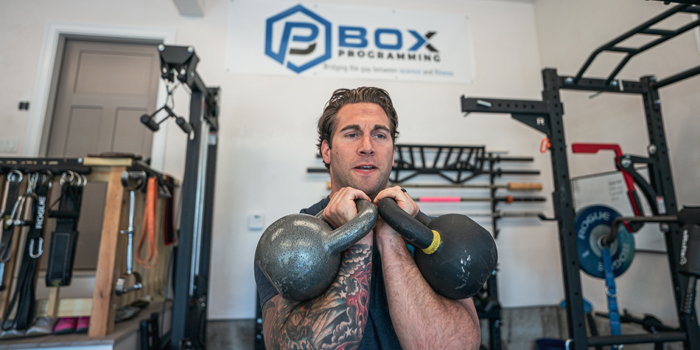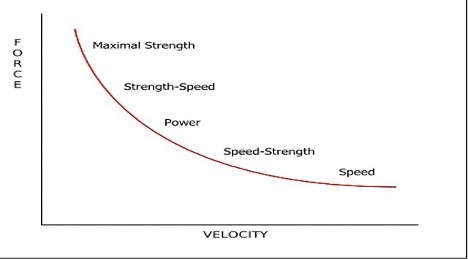
Far too often, I see people subscribing to the ‘go heavy everyday’ model. I get it; if you work hard, you’ll get results, right? Sure, but that’s only one component of the programming puzzle, and if you’ve been training for a decent length of time, you’ve probably already come to know this. In fact, this article is intended for someone that is an experienced trainee that’s well versed in moving weight in the squat, deadlift, and press.
This common misconception of lifting heavy in every workout is usually one novice trainees and coaches make, thinking that the effectiveness of their training is judged by how hard it is. Newsflash, the human body isn’t a gumball machine and doesn’t spit out candy every time you put a quarter in (hard training).
RECENT: 5 Ways to Improve Your Programming
See, there is a point of diminishing returns. If you’re not allowing for proper recovery between higher threshold sessions (maximal lifting are the more demanding sessions on the central nervous system), you’ll eventually overtrain and start going backward with your progress. Or get injured.
The reality is that hard training sessions need to be interspersed with ‘easier’ training sessions. Another component of this is utilizing strength methods that differ. Let me explain.
When different methods are utilized, the potential of altering the force-velocity curve is realistic. The force-velocity curve examines the interactions between force and velocity. It suggests there is an inverse relationship where external resistance increases the movement velocity decreases (maximal effort work) and where external resistance decreases movement velocity decreases respectively (Bomba, 2009).
That’s all well in good, but what does this mean to the average trainee who wants to get stronger? It means that there is low-hanging fruit using methods such as the dynamic effort method to improve the rate of force development (RFD). This method of using non-maximal loads with the highest attainable velocity. The primary objective is to improve RFD and increase the corridor of recruited and trained motor units (Zatsiorsky & Kraemer, 2006).
Dynamic Effort Training Guidelines
- Utilizes high-threshold motor units and facilitates RFD
- A high-intensity method that’s demanding on the nervous system
- Accommodating resistance is recommended to ensure we have proper loading throughout full range-of-motion (ROM)
- Must be separated from maximal effort training by at least 72 hours
- Works the velocity portion of the force-velocity curve
Now that we understand that there is more to great training than just lifting as heavy as possible, let’s talk about some strategies to include speed work with your training plan outlined in a complete three-week wave.
Within this three-week microcycle, I'll show you how to include both maximal strength work, assistance exercises, as well as conditioning work to build your aerobic system and facilitate recovery between training sessions.
Monday Max Effort Lower
1) Max Effort Lower:
Wk. 1 Front Squat with chains: 3RM in 6 sets. Rest 2:00
Wk. 2 Anderson Back Squat: 1RM in 8 sets. Rest 2:00
Wk. 3 Zercher Box Squat: 3RM in 6 sets. Rest 2:00
2) Hybrid Stance RDL: 4 x 8-10. Rest 90s.
3) Landmine Lateral Squat: 3 x 8-10 each. Rest 60s.
4) Cable Pull-Through: 4 x 25. Rest 60s.
5) Standing Cable Abs: 4 x 8-10. Rest 60s.
Tuesday Conditioning
Conditioning
EMOM 20 (every minute on the minute with 4 stations performing 30s on/30s off)
Minute 1: 30s of Russian Kettlebell Swings
Minute 2: 30s of No Push-up Burpees
Minute 3: 30s Jump Rope Double Unders or Single Unders
Minute 4: 30s Landmine Thrusters
*Goal: All intervals should be ‘sustainable,’ meaning you should pace yourself and not try to go ‘balls to the wall.' Give your body time to adjust to the demands of the workout. Kettlebell swings and thrusters should be light. On week two, progress to 24 minutes, and on week three progress to 40s of work/20s rest.
Wednesday: Max Effort Upper
1) Max Effort Upper:
Wk 1. Reverse Band Floor Press: 3RM in 6 sets. Rest 2:00
Wk 2. High Pin Bench Press: 1RM in 8 sets. Rest 2:00
Wk 3. Shoulder Press off pins: 1RM in 8 sets. Rest 2:00
2) Decline Rollback Triceps: 5 x 10. Rest 60s.
3) Weighted Neutral Grip Pull-up: 4 x 5. Rest 60-90s.
4a) T-Bar Rows - Pronated Grip: 3 x 10-12. Rest 45s.
4b) Overhead Rope Pushdowns: 3 x 15-20. Rest 45s.
Thursday: Cardiac Output Method Conditioning
At a conversational pace, heart-rate between 60-70% of Max
10 minutes air bike
10 minutes rower
10 minute Stairmaster or Treadmill
*Note: This is steady-state conditioning with no rest between air, rower, Stairmaster.
Friday: Dynamic Effort Lower
1) Seated Dynamic Box Jumps: Accumulate 25 jumps performing sets of 3-5. Rest 45-60s. Add a weighted vest on week 2 & 3
2) Sumo Speed Pull Deadlift: 8 x 3 @50% of 1RM if using chains or bands OR 60% of 1RM if you’re not using chains or bands. Perform a set every 60 seconds, resetting on each rep. Add 5% to each subsequent week. Elevate plates 2” off the floor
3) Glute Ham Raises: 4 x 8-10. Rest 90s.
4) Goblet Squat: 3 x 12-15. Rest 60s.
5) Farmer Carry: Max 90 ft. trips in 8:00 using heaviest DBs or KBs possible.
Saturday: Dynamic Effort Upper
1) Band Assisted Plyo Push-ups: 5 x 4. Rest 45-60s.
2) Football Bar Speed Bench Press: 9 x 3 @40% of 1RM + bands or 50% of with no bands, every 60s. Change grip every 3 sets ie. close, medium, 1” wider than medium grip. Add 3-5% to each subsequent week.
3a) V-handle Lat Pulldowns: 4 x 12-15. Rest 30s.
3b) Split Stance Landmine Press: 4 x 6-8 each. Rest 30s.
4) Seated Cable Facepulls: 3 x 15-20. Rest 60s.
Sunday: Active Recovery
1) 45-60 minute walk nasal breathing the entire time
2) Correctives
3) Global Foam Rolling large musculature ie. quads, hamstrings, glutes, lats.
Program Notes
- Max effort work variations rotate weekly.
- Perform the same assistance exercises for all three weeks, increasing loading if you’re feeling good.
- All sets listed for assistance work are ‘work sets,’ meaning take 1-2 sets to get warm as needed before starting your work sets.
- If you do not have access to a football bar, a straight bar will work.
- Any of the exercises that utilize bands or chains can be done without them.
- Sunday can be a complete day of rest, but performing 2-3 walks a week will help increase non-exercise thermogenesis as well as facilitate recovery. This is also a good way to restore natural breathing via nasal breathing.
Closing
There is always more than one way to skin the cat and training for speed is equally as important as training heavy. This message extends to those that are no longer competitive athletes too. As we know, type 2 (fast-twitch) muscle fibers deteriorate with age. This is the muscle fiber that is responsible for gaining lean muscle mass and allows you to sprint into action if you’re ever chased by a bear. With that said, training for speed has benefits that extend beyond its ability to improve strength. Furthermore, training for speed is a nice break from training heavy and creates synergy within effective programming that will keep you motivated to train without overtraining!
Jason has been involved with the fitness industry for close to 14 years working with athletes from all walks of life (including soccer moms, professional athletes, and military personnel). The conjugate method is the basis of all his programming. He is the owner of BP Training Systems, an online programming business that provides programming to CrossFit affiliates and strength and conditioning facilities all over the world. In addition to having a BA in Psychology with honors and a Masters of Science in Exercise Physiology, Jason is a CSCS, Westside Barbell Special Strength Coach, CrossFit Level 2 coach, and a Combat Veteran who is passionate about helping other coaches improve their programming.












2 Comments